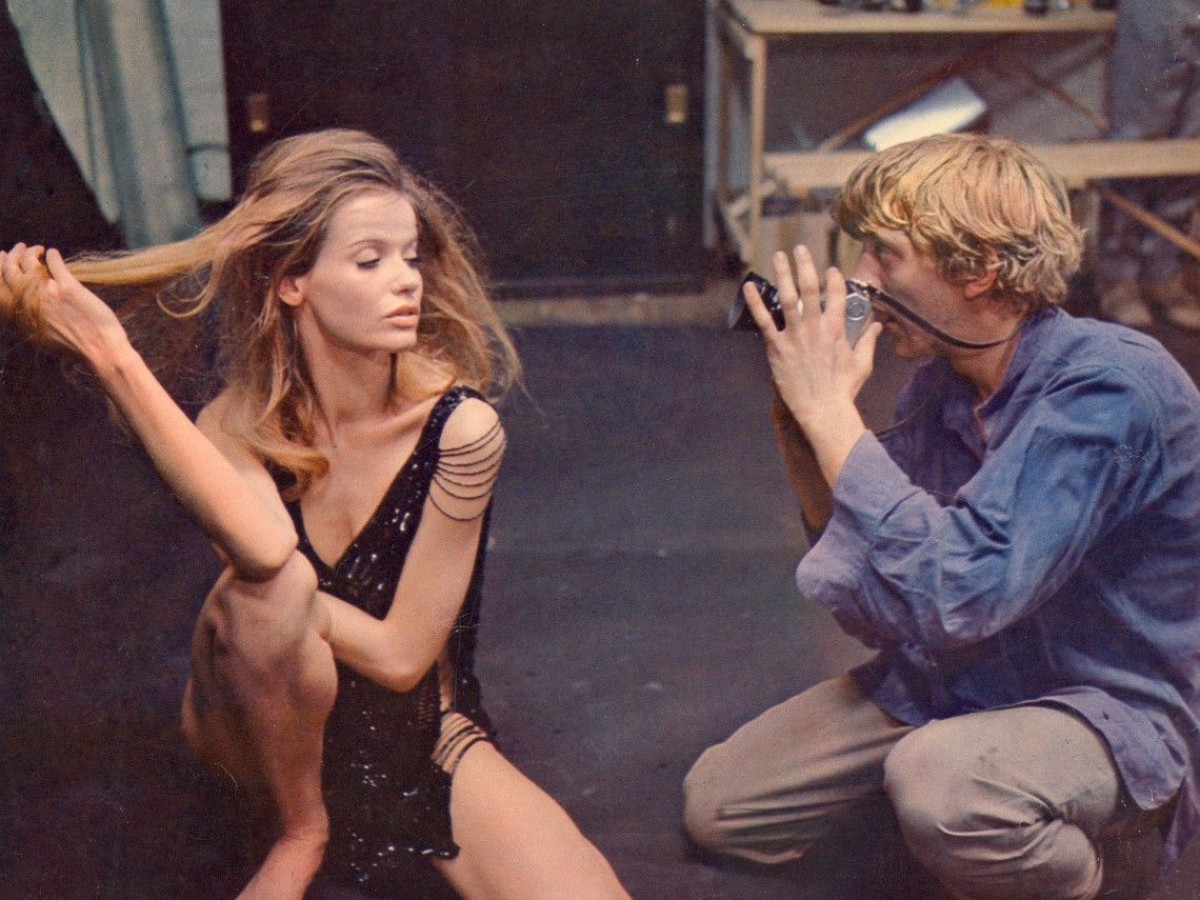Pier Paolo Pasolini and Italian Cinema in the 1960s
January 8 to February 9, 2009
In the 1960s, Italian cinema reached the pinnacle of both its artistic splendour and international influence. Masters of worldwide stature such as Michelangelo Antonioni, Federico Fellini, Luchino Visconti, and, some time later, Bernardo Bertolucci, set new standards for auteur filmmaking, while the Italian film industry had become Europe's film centre, and the only cinema where East, West and Hollywood were able to find common ground.
Even more so than France or Great Britain, Italy was also hip. Thanks to La dolce vita, Via Veneto became a magical place in popular culture which lent its lightly democratic flair to any visitor strolling through Rome, while Blow Up turned the activity of fashion photographers and models into dream professions which seemed within anyone's reach. The commedia all'italiana, whose bittersweet tone seemed to express all of life's complexities, had become an international cinematic idiom, thanks to a few geniuses of popular cinema such as Dino Risi (Il sorpasso/The Easy Life) and Luigi Comencini. People understood these films from Yugoslavia to Japan, and adapted the films' idiom to suit their taste. Politically engaged directors like Francesco Rosi (Le mani sulla città/Hands over the City), Gillo Pontecorvo (La battaglia di Algeri/The Battle of Algiers) and Damiano Damiani imbued audiences with the feeling of being participants in the uncovering of corruption scandals, the fight against organised crime, and the liberation of the "Third World" from the imperialist yoke; one could feel the political pulse of the times and find out how “The System" functioned. And revolution never looked as good as it did with Bertolucci – as if it had already taken place.
The iconic auteur of such an era could only be a master of constant, productive contradictions. The utopia of their reconciliation seemed to be astonishingly viable in his films: Pier Paolo Pasolini, Communist, Catholic, homosexual, author and filmmaker, a public personality, a commentator of his times and mores, a skeptic regarding the economic boom, a football fan, a yearner. Everybody knew PPP and had an opinion about him, everybody acted in relation to his ideas, even if only sub-consciously; people felt that he spoke to them, understood that what was a concern to him concerned them, too. This is one of the differences between Pasolini and the great Ermanno Olmi, who was often described as his Christian Democrat counterpart. Olmi did not have the same talent for mesmerising or polarising the public. Nobody except Pasolini could have strolled along a beach at Ferragosto, dressed in a white suit and balancing a microphone in the palm of his hand like a raw egg, asking people about their love life – and get answers from them (Comizi d'amore). Pasolini had the entire country on the palm of his hand, just like his microphone.
In contrast to almost all other important filmmaking nations of the 1960s, Italian cinema experienced no radical break with established structures. The backbone of Italian film culture, which was based on Neorealism, enjoyed so much consensus that it seemed able to support any extreme positions and aesthetic developments whatsoever. Iconoclasts such as Marco Bellocchio (I pugni in tasca/Fists in the Pocket) and Marco Ferreri (Dillinger è morto/Dillinger is Dead) could develop their talents with close ties to the industry, and even the underground cinema of Carmelo Bene (Nostra Signora die Turchi/Our Lady of the Turks) seemed universally valid, especially when seen in the context of Visconti's The Damned, Comencini's 1969 Casanova, or Pasolini's Medea.
But not all were swept along. Vittorio Cottafavi and Roberto Rossellini decided it made more sense to abandon cinema altogether after their late-career milestones (such as Rosselini's Anima nera/Black Soul), and redirected their hopes and experiments towards television. Radical realists like Vito Pandolfi (Gli ultimi) and Vittorio De Seta (Banditi a Orgosolo/Bandits of Orgosolo) soon saw themselves marginalised. The popular left, represented by Giuseppe de Santis (La strada lunga un anno/The Year Long Road) and his pupil Elio Petri (Indagine su un cittadino al di sopra di ogni sospetto/Investigation of a Citizen Above Suspicion), had been a central factor in Italian film culture at the start of the decade – but ended up isolated only a few years later. All of which is to say that the 1960s were also the years that saw the disintegration of Italian cinema.
By mid-decade (the death of the great Communist party leader Palmiro Togliatti in 1964 can be taken to have symbolic import), key works such as Antonio Pietrangeli's Io la conoscevo bene/I knew her well, De Seta's Un uomo a metà/Half a Man and Antonioni's Blow Up clearly stated that the ‘life and times’ of their protagonists could no longer be narrated in realistic terms, that something had been irrevocably broken. (The fact that the most successful documentaries of those years came from Fascists was the writing on the wall that people apparently refused to recognise.) In his wonderful films starring Totò (such as Uccellacci e uccellini/Hawks and Sparrows), Pasolini celebrated the last of a ‘people’s cinema’, and with Teorema the end of the spiritual. Then he set out to describe the end of the body as a source of meaning for life – in a final series of films that are decisively of a different, no longer utopian age.
The Retrospective, curated by Olaf Möller, is one of the most comprehensive presentations of the subject ever undertaken outside of Italy. It includes 40 major works from the years 1958 to 1971. The show has been made possible by the support of the Cineteca Nazionale in Rome, the Italian Cultural Institute in Vienna and by Mediaset – Cinema Forever.


